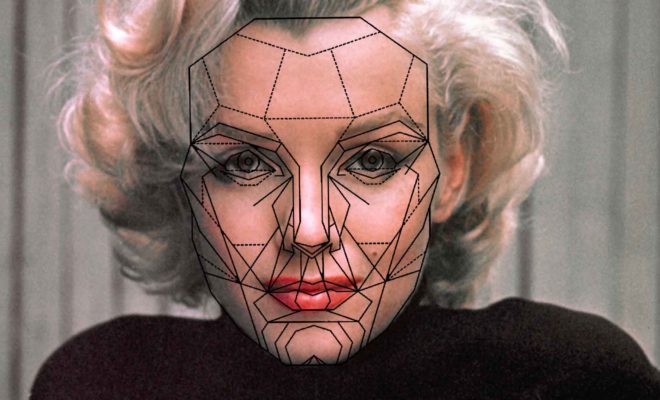
Feature
Divine Proportion
Dental aesthetics just may be the golden beauty secret
By Sue Cullen
Say you’ve been looking in the mirror and the face looking back seems, well, a bit worn. Maybe it’s time for a refresh. You’re not ready to consider plastic surgery, but it would be nice to see fewer lines, wrinkles and sags. So, you pick up your phone and call—your dentist.
If that’s surprising, think about this.
Dentists, and cosmetic dentists in particular, not only focus on dental health, but also on the aesthetics of a beautiful smile. What frames that smile is also important. Prominent nasolabial folds along with lip and marionette lines don’t make the most of a dazzling new asset.
“Dentists are highly trained in the anatomy of the head and neck. When I trained at the University of Florida, our first two years were with medical students who studied the whole body. Our training on the anatomy of the head and neck is really advanced,” says Dr. Jill Morris of World Class Dentistry in Sarasota. “In the U.S., there are about 6,000 plastic surgeons and 25,000 dentists doing facial aesthetics. In Europe, dentists have been at the forefront of facial aesthetics for many years. Here, it seems newer to people.”
When you consider that dentists already have a hygienic environment, skill with injectables and know how to make patients comfortable during procedures makes the move into facial aesthetics seems more like a natural progression. With the proper training, of course. Cosmetic dentists also have one more crucial skill that many other practitioners don’t. Their training has taught them the beauty secret of the ages—the Golden Ratio, also known as the Divine Proportion or Golden Proportion.
Typically, facial rejuvenation addresses sagging, wrinkling and loss of volume that result from aging, but doesn’t address a fourth factor that makes us look older than we’d like. “Plastic surgeons can’t correct the wear our teeth experience as we age. This wear brings our nose and chin closer together and the lower face kind of collapses. As a result, the person’s face sags and lines form. A plastic surgeon can pull everything back, but the face is still collapsed,” says Morris, who studied facial aesthetics in Europe and has taught other dentists and health care professionals to use dermal fillers and neurotoxins.
When the teeth are built back up, typically with porcelain, the bottom of the face returns to its proper youthful dimensions so less filling and lifting is required. At that point, the result can largely be determined by the skill of the practitioner wielding the needle, laser or cannula. This is where an understanding of the Golden Proportion is crucial.
As it turns out, a mathematical ratio shows up over and over in nature in everything from geometric solids and flower petals to human faces. This ratio—1 to 1.618—was identified by the early Greeks and Romans, studied intensely by Leonardo da Vinci, and has been used extensively in art and architecture because the human eye finds it very pleasing. This Golden Proportion underlies virtually everything we consider to be beautiful.
“Even teeth have Golden Proportion measurements, and cosmetic dentists have used those for years,” Morris says. “When the face collapses and becomes more square, we use Golden Proportions to determine how far the nose and chin should be apart. We want to get that triangular shape back.” Using the Golden Proportion when it comes to injectable fillers or with cosmetic threads can made the difference between a beautiful, natural look and results that seem artificial or too “done”.
Getting Botox injections or lips filled while already numb and in the chair for cleanings or other work also is a matter of real convenience for many patients. Some dentists have been expanding facial aesthetic offerings beyond Botox and fillers to include advanced lasers, cosmetic PDO threads, micro-needling, and the use of blood factors that promote healing among other benefits. Morris has been using two types of cosmetic threads to lift sagging facial, jowl and neck chin and also create volume in sunken areas in the cheeks and mouth and beneath the eyes.
“For years, you could see women with no lines on their faces, but then you’d see all these wrinkles on their necks,” she says. “Now, we can place threads right in those neck wrinkles and in the décolletage to generate collagen.” The threads also can help stimulate growth of hair and eyebrows. They work by promoting the production and circulation of collagen, building strength, elasticity and firmness, for a more youthful look. The threads dissolve over time, but the collagen matrix remains so results last from 18 months to four years.
Also for thread lifts and other procedures, Morris prepares platelet rich fibrin (PRF) from her patient’s own blood to use with the procedure to promote healing and further stimulate collagen production. PRF is richer in growth and cell communication factors than platelet rich plasma (PRP). As a holistic dentist, she also uses a special method of heating PRF that makes it suitable to use as an injectable filler for patients who prefer a natural rather than synthetic material.
Before seeing a dentist or any other practitioner offering facial aesthetics, ensure they are qualified. Patients should know what advanced training a practitioner has in the procedures they offer. This should be prominently displayed on the website and in other marketing materials along with who trained them. Practitioners also should provide before and after pictures of their actual work, and not use the photos from the companies that sell the products. “People shouldn’t hesitate to consider dentists who meet these criteria for facial aesthetics,” Morris says. “Dentists have the knack for injectables. They are used to working in tight areas, and they know how to be precise because they are working in millimeters.”



You must be logged in to post a comment Login